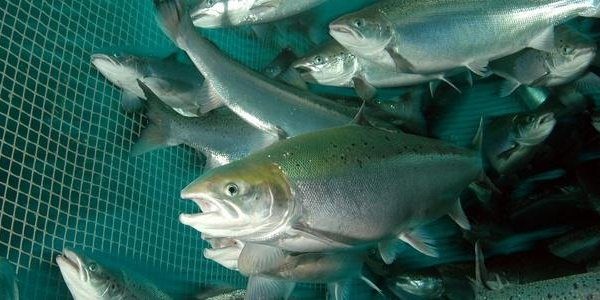Norwegian researchers have singled out “the largest fish” as those farmed salmon suffering the most and incurring the highest mortality rates, Norwegian Bergens Tidende has reported, citing a report by Havforskningsinstituttet released Tuesday.
With the high rate of “morts” in the public spotlight in Scotland and Norway, news that lice treatments might be especially harmful to large fish comes as something of a surprise. Newly released Scottish numbers on fish mortality revealed it was often smaller fish succumbing to treatment.
In Norway, fish deaths in the first months of being place in grow-out have been fewer with time, judging by the report SalmonBusiness has read. Between 2009 and 2015, Norwegian fish farmers have managed to curb mortality rates for smolts to 0.8 percent from 1.7 percent.
Tail-end “morts”
“These changes in mortality patterns indicate that fish farmers have managed to significantly reduce mortality in the months right after their placement, while mortality in the final part of production has increased.
Pointing to larger fish, the researchers’ charts show fish deaths falling for the first seven months before stabilizing and growing again from the tenth month after their placement in grow-out. The trend has worsened in recent years, when lice treatments intensified.
Read All Scottish farmers to report “morts”
Read Scottish “morts” cross-section shows higher cost of disease
Read Company letters reveal extent of lice battles
Other charts called “heat maps” showed that smaller fish of up to 2 kg that died at 15 degrees Celsius in 2009-2010 were surviving in 2016. From that size and upward to 5 kg, however, fish placed in grow-out in 2015-2016 were dying at 15 degrees C.
Casualties
The newspaper, however reported that de-licing operations on larger fish bring to bear “powerful forces”, and that thermal lice treatments have taken the greatest toll.
“Enormous forces are brought to bear when salmon is freighted through the systems,” researcher, Lars Helge Stien, told the newspaper.
“It’s clear that large fish are exposed to injuries related to pumping and transport through the system.”
The Institute, meanwhile, said that in Norway, lice treatments vary from county to county and among the 19 fish farmers analysed in its study. In Hordaland county in the surrounds of coastal city, Bergen, the mortality rate is 22.5 percent; in Nordland County, it’s just six percent.
“This shows that it’s possible to improve the welfare of farmed fish significantly if best practices are taken into use by all,” Stien said, adding that many operations saw minimal mortality.

